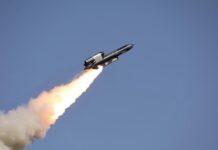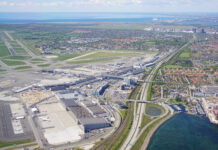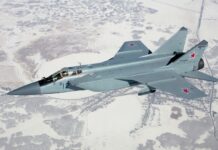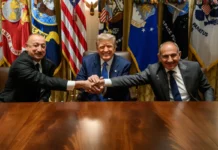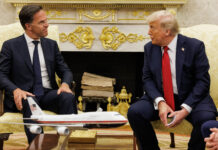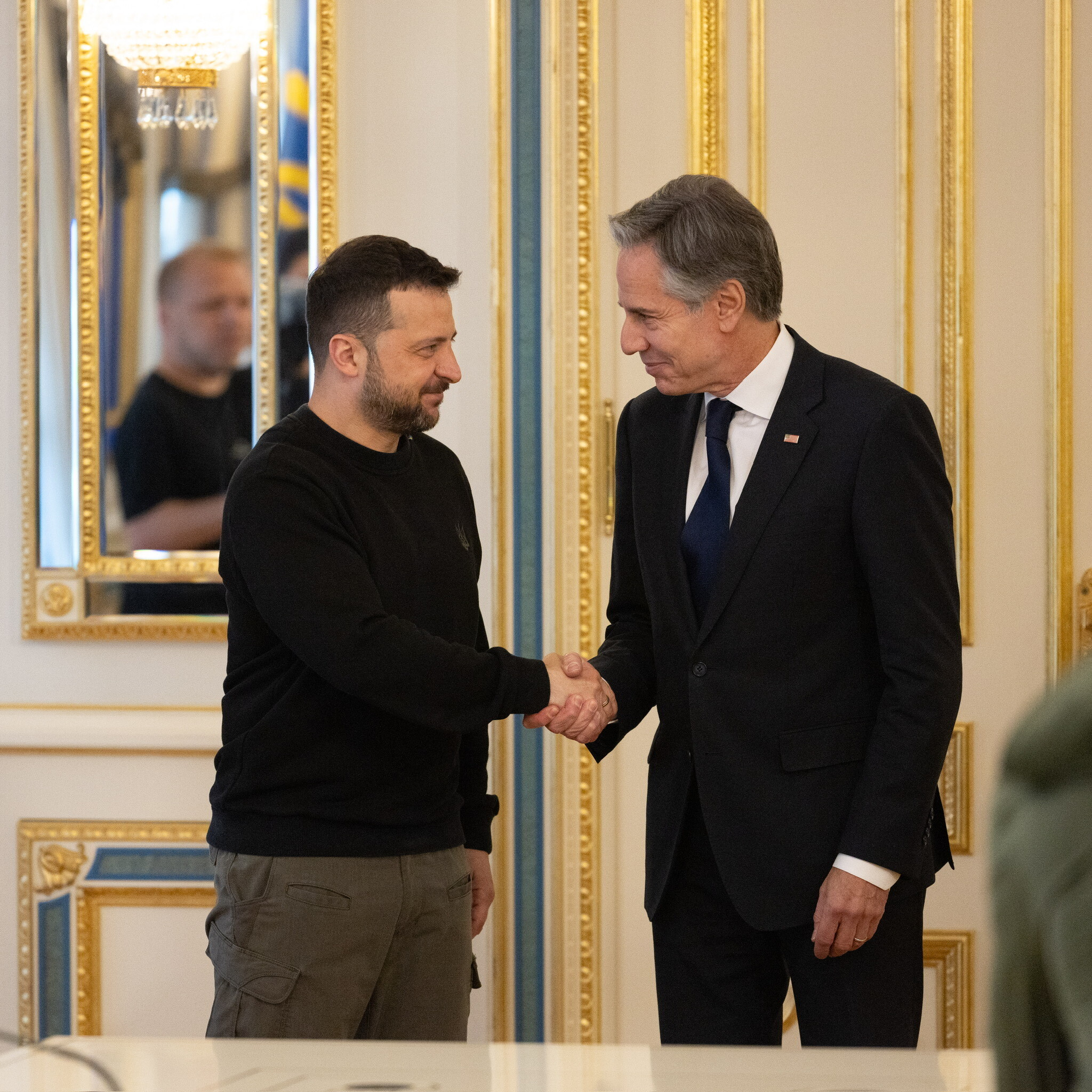
Beyond the battlefield: influencing factors in the Ukraine war
Peter Felstead
Russia’s recent offensive in the Kharkiv region is stretching the tactical ability of the Ukrainian military to respond, while other strategic circumstances are also in play. Peter Felstead looks at some of the factors that could influence the outcome of the war in Ukraine.
On 10 May 2024, Russia initiated a major new offensive towards Kharkiv in northeastern Ukraine. Although a Russian troop build-up adjacent to Kharkiv signalled that a Russian offensive was in the offing, Ukrainian forces in the region appeared unable to stop the offensive gaining ground.
By 13 May Russia was claiming its forces had entered the northeastern border town of Vovchansk, just 74 km from Kharkiv city itself. Kharkiv regional head Oleh Syniehubov told local TV that Ukrainian forces were holding Russian troops back but warned that fighting could spread to new settlements, according to Reuters. On Telegram, Syniehubov described the situation as “quite complicated”, with Russian forces continuing to advance.
By 15 May Ukraine had pulled its troops back from several villages in the Kharkiv region, looking to establish a more defensible line. While Russian intentions remains unclear – regarding whether this is a push for Kharkiv city itself or a more general offensive to pin down and stretch the Ukrainian defenders – the Ukrainian leadership was clearly concerned. On 15 May it was announced that Ukrainian President Volodymyr Zelenskyy had cancelled all foreign trips as the Ukrainian military focused on stemming the Russian advances.
According to data from the Institute for the Study of War that was cited by the AFP news agency and the BBC, Russian forces seized 278 km2 of Ukrainian territory between 9 and 15 May. This new Russian offensive effectively opens up another active front in Ukraine, where the fighting has mostly been confined to the country’s East and southeast throughout the war.
Inevitably, the Russian attack in Kharkiv region exploited a lull in US military support for Kiev. A package of US security aid bills that included USD 60.8 billion (EUR 57 billion) to support Ukraine was finally passed signed into law on 24 April, having been held up for several months by an ‘America First’ cabal of Republicans in the US House of Representatives. Following that, on 10 May another tranche of USD 400 million in military aid was announced by the US government. However, there was an inevitable delay in getting that US military aid package – which addresses Ukraine’s most urgent battlefield requirements, including surface-to-air missiles (SAMs), artillery rounds, armoured vehicles and anti-tank weapons – to the Ukrainian front line where it is needed. Longer-range SAMs are most urgently required to prevent Russian combat aircraft launching stand-off attacks from within Russian airspace.

Credit: Anthony Blinken X account
As well as now having to shore up its defences around Kharkiv, the Ukrainian armed forces have also lost ground in eastern Ukraine while the US supplemental aid package was delayed. US Secretary of State Antony Blinken travelled to Kyiv on 14 May to reassure beleaguered Ukrainian President Volodymyr Zelenskyy that US weapons from the latest military aid package had started arriving in Ukraine and that more were on the way. “We know this is a challenging time,” Blinken stated before he met Zelenskyy, “but we also know that, in the near term, the assistance is now on the way. Some of it already arrived, and more of it will be arriving, and that’s going to make a real difference against the Russian aggression on the battlefield.”
Manpower issues
As the war in Ukraine grinds on into its third year, both sides continue to suffer from significant manpower issues. With his vision of a quick victory in February 2022 soon evaporating, Russian President Vladimar Putin was quick to adopt the policy of recruiting convicts to fight at the front. This first occurred within the mercenary forces of the Wagner Group, whose mercurial leader, Yevgeny Prigozhin, began recruiting prisoners from Russian jails in the summer of 2022 to bolster its ranks. Wagner troops were heavily involved in the battle for Bakhmut, in eastern Ukraine, which they captured in May 2023. In October 2022, however, during Ukraine’s counter-offensive around Kharkiv, Prigozhin began to fall out with the Russian military leadership. He was ultimately killed following a June 2023 Wagner rebellion against Moscow, dying in a suspicious aircraft crash on 23 August 2023.
Thereafter, the policy of recruiting convicts was taken up by the main Russian military in so-called ‘storm units’, whose ranks were widely reported by Russian sources as being little more than ‘cannon fodder’, receiving little to no training before being sent to the front. In April 2023 the Russian government, seeking to avoid the imposition of unpopular draft measures, started to mount a major recruitment drive in Russia, appealing to a sense of masculinity and stressing above-average pay and benefits for military service.
On 16 January 2024 a report by Business Insider, quoting Vadym Skibitskyi, deputy chief major general of Ukraine’s main military intelligence arm, stated that Russia was recruiting 30,000 new soldiers a month to make up for the attrition in Ukraine. Skibitskyi told RBC-Ukraine that, while the 30,000 new monthly recruits are enough to replenish losses on the front lines, Russia would need to “declare a more massive mobilisation” to “create a more strategic reserve”.
According to a Royal United Services Institute (RUSI) report on 13 February 2024, the Russian military began 2023 with a highly disorganised force in Ukraine comprising approximately 360,000 troops. “By the beginning of the Ukrainian offensive in June 2023, this had risen to 410,000 troops and was becoming more organised,” RUSI reported. “Over the summer of 2023, Russia established training regiments along the border and in the occupied territories and, following the mutiny of Wagner forces, endeavoured to standardise its units, breaking down the previous trend towards private armies. By the beginning of 2024, the Russian Operational Group of Forces in the occupied territories comprised 470,000 troops.”
RUSI additionally noted that, “Although the Russian military’s aspiration to increase in size to 1.5 million personnel has not been realised, recruiters are currently achieving almost 85% of their assigned targets for contracting troops to fight in Ukraine. The Kremlin therefore believes that it can sustain the current rate of attrition through 2025.”
Russia has also looked internationally for recruits – including from countries such as Serbia, Cuba, former Soviet states, African states and even Asian countries including India, Nepal and Sri Lanka – lured by the promise of lucrative salaries and benefits and often advertised as ‘security guard’ positions.
The reality of combat in Ukraine, however, has frequently come home to roost for such recruits. Many have been unable to return home, while those who have were often traumatised by their experience of frontline combat. The Telegram channel of the Atesh military partisan movement in occupied Ukraine claimed in April 2024 that Cuban mercenaries fighting in the Donetsk region had killed their commander of the 428th Motorized Rifle Regiment for humiliating troops under his command and confiscating their salaries.
On 17 April 2024 a joint investigation by BBC Russian, independent Russian media group Mediazona and associated volunteers reported that the death toll among Russian military personnel serving in the Ukraine war since February 2022 had passed 50,000. The investigation found that the body count was more than 27,300 in the second year of the Russian campaign – 25% higher than in the first year – mainly due to the Russian ‘meat grinder’ strategy of throwing thousands of poorly trained conscripts, including convicts, into the campaign. The BBC estimated that at least two in five of Russia’s dead soldiers were people who had nothing to do with the country’s military before the invasion.
On 13 May the Ukrainian MoD asserted that its General staff had reported 1,740 Russian personnel losses, which it claimed was the highest daily number of such losses since the opening day of the invasion.

Credit: Ukrainian MoD
Ukraine, of course, has its own manpower problems and, as a functioning democracy, is more constrained in addressing them than its Russian adversary. The Ukrainian Ministry of Defence does not typically publish Ukrainian casualty figures, but President Zelenskyy stated in February 2024 that 31,000 Ukrainian soldiers had been killed in the war up to that point. However, the real figure is likely to be much higher; US officials quoted by The New York Times in August 2023 put the number of Ukrainian military dead at 70,000, with as many as 120,00 injured.
The Office of the United Nations High Commissioner for Human Rights (OHCHR) verified a total of 30,457 civilian casualties during Russia’s invasion of Ukraine as of 15 February 2024, with 10,582 killed and 19,875 injured, but noted that the actual numbers could be higher.
According to a 2 May 2024 report for the Atlantic Council US think tank written by Dr Elena Davlikanova, a Democracy Fellow at the Center for European Policy Analysis and an associate professor at Sumy State University in Ukraine, around 250,000 people served in the Ukrainian military prior to the Russian invasion, although a significant surge in volunteers had swelled that figure to around 880,000 personnel by May 2024.
With around 330,000 Ukrainian troops estimated to be actually deployed on the battlefield as of March 2024, a new Ukrainian mobilisation law came into force on 18 May 2024. Ukrainian military officials initially stated that the goal of the new law was to mobilise an additional 500,000 personnel, although that figure was subsequently reduced to an unspecified but significantly lower number.
Indicative of the difficulties in recruiting for the war in a democracy, Ukraine’s mobilisation bill was reported to have been subjected to approximately 4,500 amendments before it was passed. According to Dr Davlikanova’s Atlantic Council report, the final version of the mobilisation bill was “focused on regulating the process of identifying and registering potential conscripts, reviewing eligibility for mobilisation, and revising penalties for evading service. Key points include the introduction of an online registry for recruits and the lowering of the age for draft eligibility from 27 to 25.”
Dr Davlikanova further noted that most of the criticism levelled at Ukraine’s new mobilisation law focused on the removal of earlier provisions regarding demobilisation. Clearly, Ukraine’s military leadership are concerned that the withdrawal of the country’s most experienced military personnel without providing sufficiently trained replacements could have seriously adverse effects on the front line.
Economic considerations
Beyond the battlefield, a major factor in the capability of both Ukraine and Russia to continue waging the war is, of course, the two countries’ economic situation. According to data published by the International Monetary Fund (IMF), Ukraine currently has a real GDP growth of 3.2%. That compares with a rate of 3.4% in 2021, prior to the war, before an all-time low of -29.1% in 2022 as the country was devastated by the Russian invasion.
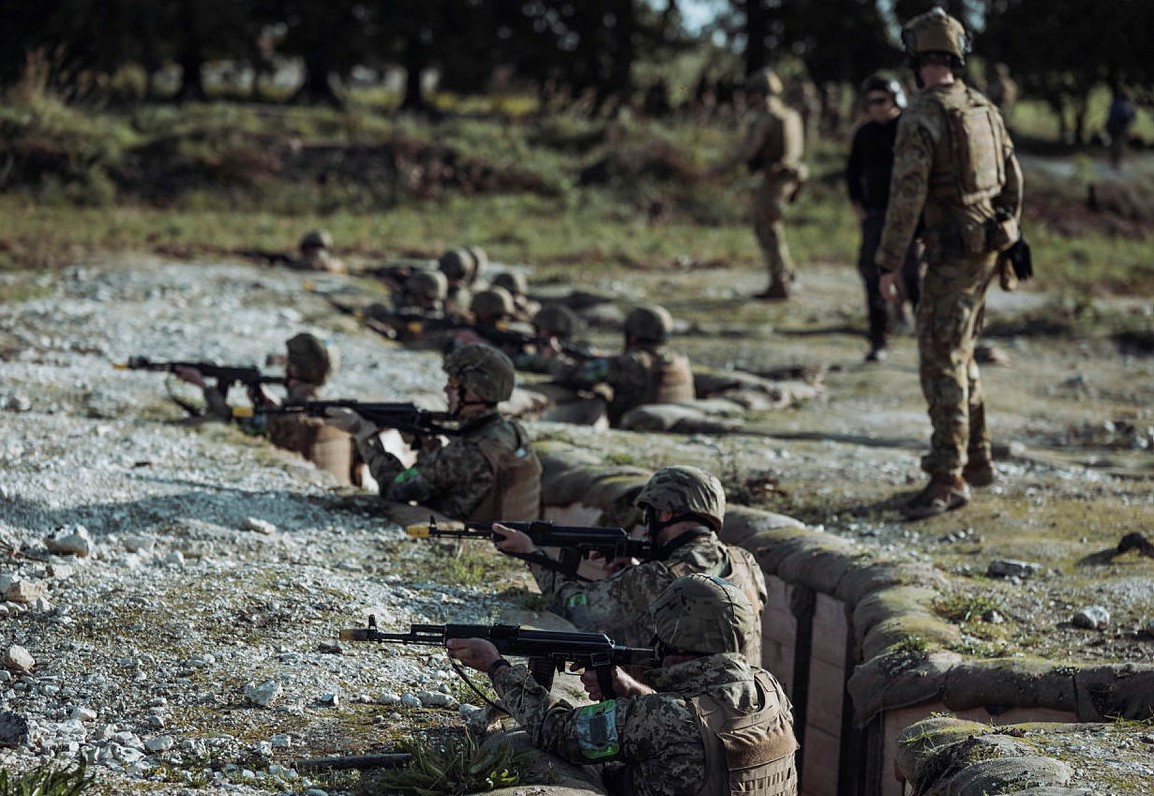
Credit: Ukrainian armed forces
Ukraine’s economic ability to wage the war, however, is significantly enhanced by the military aid from its allies. According to the Kiel Institute for the World Economy, allocated government support to Ukraine from 24 January 2022 to 29 February 2024 amounted to a EUR 89.6 billion total from Europe and EUR 67.1 billion from the United States. To add some context, Ukraine’s military expenditure in 2021, the year before the Russian invasion, was given as USD 5.94 billion (EUR 4.94 billion) by the Stockholm International Peace Research Institute (SIPRI), rising to USD 44 billion in 2022. Russian defence spending, meanwhile, was stated by SIPRI to be USD 65.91 billion in 2021, rising to USD 86.37 billion in 2022.
Russia has gone from real GDP growth of 6% in 2021 to -1.2% in 2022 to 3.2% so far in 2024. There are signs, though, that Russia’s traditional revenue streams, which buoyed the Russian offensive at the beginning of the war, are now flagging. Russian energy conglomerate Gazprom, for example, once Russia’s most profitable company, recently announced a net loss of USD 6.9 billion for 2023 – its biggest loss in at least a quarter of a century – as European countries have successfully weaned themselves off Russian gas supplies since the Ukraine war began.
These losses have only been partially offset by profits from oil sales, which the West has endeavoured to inhibit, while gas sales to China so far are less than a tenth of what was sold to Europe before the Ukraine war, according to a 2 May 2024 report in the UK’s Financial Times. “The long-delayed Power of Siberia 2 pipeline is planned to send gas [to China] from the fields that once supplied Europe, but would require years to build and still not compensate Gazprom’s losses in Europe,” the Financial Times report stated.
On 10 May 2024 US Air Force Lieutenant General Steven L Basham, the deputy commander of US European Command, spoke at a livestreamed event by the Foundation for Defense of Democracies where he talked up the ability of the West’s defence-industrial base to challenge Russia’s war in Ukraine. While it has been easy for an autocratic regime like Russia to accelerate their defence-industrial base at the expense of its economy to continue the war in Ukraine, along with help from Iran and North Korea, said the general, he noted that the West’s defence-industrial base is also accelerating.
“Make no mistake: it’s picking up speed,” said Lt Gen Basham. “It will continue to accelerate past the capability of Russia. The time that is being spent by Russia inside Ukraine is also time that we have to get our industrial base to where it needs to be.” Noting that Russia was a country that used to pride itself as a defence exporter, the general pointed out that now “they seem to be importing an awful lot of not only equipment, but also technology. And a lot of that technology is actually coming from China”. Russia is also importing bomb-laden unmanned aerial vehicles (UAVs) from Iran.
However, Lt Gen Basham’s optimistic outlook is only likely to prevail as long as Democratic President Joe Biden remains in the White House, given that the US government provides the greatest share in country terms of military aid for Ukraine. Former President Donald Trump, who is effectively the Republican candidate for the US presidential elections in November 2024, was notoriously acquiescent to Putin during his time in the White House, even siding with Putin in Helsinki on 16 July 2018 over the word of his own intelligence services in denying there had been any Russian interference in the US presidential election that put him into power.
While Trump is currently subject to the first of four criminal trials, as the first ever former US president to be so indicted, national US polling still has Trump marginally ahead of Biden, with Trump on 41.2% and Biden on 40.5% according to a polling average published by the fivethirtyeight.com website on 15 May 2024. If returned to the White House for a second term, Trump is likely to curtail US military assistance for Ukraine, having previously claimed he could end the Ukraine war by negotiating peace terms that would most likely reward Russian aggression and be anathema to the Ukrainian leadership.
A potential wildcard
One other situation that might influence events in the Ukraine war could occur 700 km away, in Chechnya. Since February 2007 Ramzan Kadyrov, the son of former Chechen President Akhmad Kadyrov, has ruled Chechyna as a virtual fiefdom in return for absolute loyalty to Moscow. However, sources ranging from Ukrainian intelligence to Russian insiders have reported that Kadyrov is terminally ill, apparently diagnosed with pancreatic necrosis in 2019.#
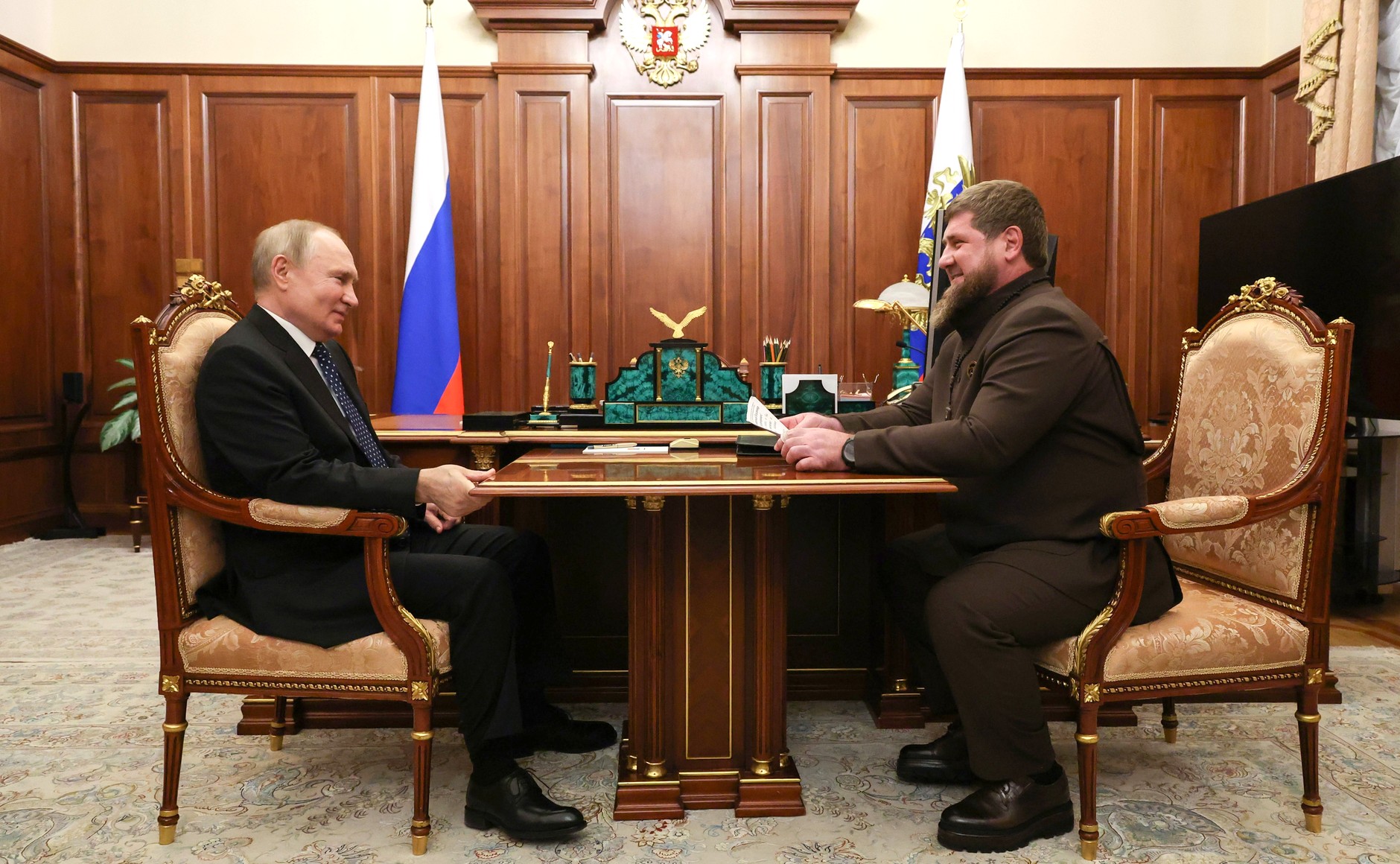
Credit: Office of the President of Russia
Writing in The Times on 27 April 2024, Mark Galeotti, a Russian specialist who has written more than 20 books on Putin’s regime, noted that’s Kadyrov’s illness puts Chechnya’s stability in doubt. “If recent reports are correct that the Chechen warlord Ramzan Kadyrov is fatally ill, then the settlement that Putin imposed after the second Chechen War (1999-2009), when he backed a self-interested strongman [Akhmad Kadyrov] to keep a violent peace rather than seek any fundamental solution to the region’s discontent, is in jeopardy,” wrote Galeotti.
“Stability in Chechnya was bought after the war through both massive federal subsidies – to buy off Kadyrov and the rest of the Chechen elite – and a balance of terror between rival armed camps, all of whom pledged loyalty to Kadyrov, but mistrust each other,” the Russia specialist added. “If attempts to install a new leader cause splits in the Chechen elite, then this is likely to become not just a political but an armed dispute.”
Chechnya was the making of Vladimir Putin. Even before being inaugurated as Russian president on 7 May 2000, as Russian prime minister Putin brutally repressed Chechen Islamist rebels in a bloody war before turning Akhmad Kadyrov into an ally and installing him as the head of the Chechen Republic: a position that passed to his son when he was assassinated on 9 May 2004. The possibility, therefore, is that, if Ramzan Kadyrov dies and the fight for his successor turns messy, Putin might be forced to defend his legacy, stretching Russia’s offensive military capabilities into dealing with events in Chechnya as well as Ukraine.
Asked what extent such a scenario could force Putin to prioritise shoring up Chechnya at the expense of offensive operations in Ukraine, Galeotti told ESD on 15 May, “It will be a priority, but Putin’s track record is to try and have his cake and eat it – often with disastrous effect. He will probably initially rely solely on the National Guard, to avoid having to divert forces from Ukraine, which risks giving more time for any trouble to develop, if they prove unequal to the task.”
However, asked by ESD how far the Russian economy can go in supporting the war in Ukraine, especially if resources had to be diverted to Chechnya, Galeotti replied, “The Russian economy is pretty stable, and can likely sustain the current effort out to 2027 at least. If Chechnya flares up, ironically the cost of any pacification operation can be offset by being able to stop the current federal subsidies that go to keep Kadyrov and his cronies sweet, so I doubt that it would have a serious economic impact.”
Peter Felstead



